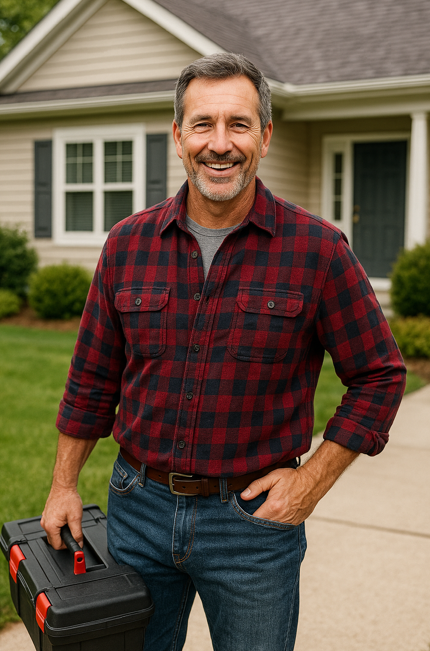Introduction
Hey, Mike Sanders here. I’ve helped a lot of homeowners navigate HVAC upgrades, and one topic that keeps coming up is R-32 heat pumps. Are they better? Are they safe? Worth the extra cost?
If you’re thinking about upgrading your system, you’ll want the facts. R-32 refrigerant technology is making waves for its energy efficiency and lower environmental impact, but there’s still plenty of questions out there. This FAQ breaks down everything you need to know — straight talk, no jargon.
FAQ 1: What Is R-32 Refrigerant?
R-32, or difluoromethane, is a next-generation refrigerant used in modern heat pumps and air conditioners. What sets it apart is its low Global Warming Potential (GWP)—only about one-third that of the older R-410A refrigerant. That means less climate impact if it leaks.
Unlike blends like R-410A, R-32 is a single-component refrigerant, which simplifies recycling and reduces environmental risks. The EPA’s greenhouse gas emissions overview emphasizes how important lower-GWP refrigerants are in cutting HVAC-related emissions.
FAQ 2: How Does R-32 Compare to Older Refrigerants?
R-32 delivers better performance on two fronts:
-
Energy Efficiency: Because of its thermodynamic properties, R-32 enables heat pumps to operate more efficiently, which translates to lower electricity bills. The U.S. Department of Energy highlights refrigerant advancements as key drivers in modern HVAC efficiency improvements.
-
Environmental Impact: With a GWP of 675 compared to R-410A’s 2,088, R-32 significantly reduces the environmental footprint of your heating and cooling system.
FAQ 3: Is R-32 Safe for Residential Use?
Yes. R-32 is classified as an A2L refrigerant, meaning it is mildly flammable under specific conditions but considered safe when installed and serviced by trained professionals. The Air Conditioning, Heating, and Refrigeration Institute (AHRI) sets safety standards that manufacturers and technicians follow to ensure R-32 systems are safe for residential use.
As a homeowner, your main responsibility is to choose a certified installer experienced with R-32 to ensure proper handling and installation.
FAQ 4: Does Installing an R-32 Heat Pump Cost More?
You might see a slight premium upfront — usually a few hundred dollars more than an R-410A system — mainly because R-32 equipment and installation require specific certification and training. However, the increased efficiency of R-32 systems means energy savings often recoup this cost over time. Plus, there are often incentives and rebates available to help offset the price. For example, ENERGY STAR lists federal and state programs offering financial incentives for high-efficiency heat pumps like those using R-32.
FAQ 5: Can I Retrofit My Current System to Use R-32?
Generally, no. R-32 requires equipment designed specifically for its pressure and flammability characteristics. Retrofitting an R-410A system to R-32 isn’t recommended and could void warranties or cause safety risks. A full system replacement is typically needed to switch to R-32, which also gives you a chance to upgrade to the latest, most efficient models.
FAQ 6: How Do I Maintain an R-32 Heat Pump?
Maintenance for R-32 heat pumps is mostly the same as for traditional systems: annual tune-ups, regular filter changes, keeping outdoor units clear of debris, and monitoring refrigerant charge. The key difference is to always use certified technicians familiar with R-32’s handling requirements. This ensures safety and optimal system performance.
FAQ 7: Are R-32 Heat Pumps Suitable for Cold Climates?
While the refrigerant helps with efficiency, cold-weather performance depends heavily on the heat pump’s design. Many manufacturers combine R-32 with advanced compressors and heat exchangers to deliver reliable heating even at subfreezing temperatures. Make sure to choose a model rated for your climate zone to get the best results.
FAQ 8: What Environmental Benefits Beyond Lower GWP Does R-32 Provide?
Besides having a lower GWP, R-32 systems typically use less refrigerant volume, reducing potential emissions in leaks. Being a single-component refrigerant, R-32 is easier to recycle at end-of-life, minimizing environmental impact. These factors align with international climate goals to reduce HVAC-related emissions, as noted by organizations like the International Energy Agency (IEA).
FAQ 9: How Long Do R-32 Heat Pumps Last?
With proper care and maintenance, R-32 heat pumps have a lifespan comparable to traditional systems — usually 15 to 20 years. Staying on top of regular service keeps your system running efficiently and prolongs its life.
FAQ 10: How Can I Find Rebates and Incentives?
Start by checking the Database of State Incentives for Renewables & Efficiency (DSIRE) to find programs in your area. Federal tax credits and local utility rebates can significantly reduce installation costs. ENERGY STAR’s rebate finder tool also helps homeowners identify available incentives for efficient heat pumps.
Conclusion
R-32 heat pumps offer a compelling combination of improved efficiency, reduced environmental impact, and reliable comfort. While the upfront cost can be slightly higher, the long-term savings and benefits more than make up for it.
When considering an R-32 system, always work with qualified installers and take advantage of rebates to maximize your investment.
If you want to explore the best R-32 heat pumps on the market today, check out our full selection here: R-32 Heat Pumps Collection.







